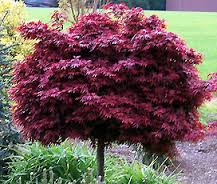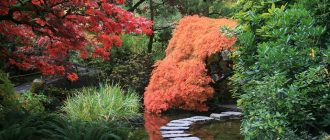Find out about the latest discovered version of the Japanese maple tree known as Shaina.
The Japanese style of gardening that has been handed down generations is causing an architectural revolution in the west today. The ancient tradition has caught the attention of the west through the exposure that it has received via the improved means of mass communications.
For westerners the harmonious and meditative environment of the Japanese garden offers a unique alternative to classic English style gardens. With a much more relaxed feel to it the Japanese garden has now become the artistic choice to build in your homes.
Amongst the many elements of the Japanese gardens that have intrigued the western world is the variety of Asian plants and trees that are used in the composition. There is a traditional library of trees, flowering plants, shrubs and ground cover plants that are a regular in the Japanese garden. However there is perhaps no other breed of tree that is used as abundantly as the Japanese maple tree family.
The Japanese maple tree family is quite extensive in its own right. The amount of variety you will be able to find under the umbrella of Japanese maples can be quite overwhelming. From tall and wide spreading maple trees to dwarfs and even bonsai container versions of the Japanese maple family exist. Add to that the fact that newer selections are being discovered and bred then you can only imagine how extensive the Japanese maple family is.
The red hot discovery
Amongst the latest developments taking place in the Japanese maple tree category is a new category known as Shaina. This is a selection of special dwarf and compact maple trees. The foliage on the Shaina selection turns from bright red to deep maroon red as it matures with time.
The nature of the maple tree that comes under the Shaina category is such that it freely branches out and as it matures it becomes one dense and hefty tree. The Shaina variety is deciduous hence it requires a lot of watering for it to grow. This is one of the reasons you will find it to be placed close by to the main water feature in a Japanese garden.
The Shaina maple grows at a relatively slow speed. It can grow up to a height of 6-8 feet in its own time. The tree turns out best when it is placed in an environment that receives filtered sunlight rather than the direct rays of the sun.
The best planting strategy for this new variety is to ensure that it has an overhead canopy of other taller trees. This will aid the Shaina maple to produce the richest of foliage hue. The fact that Japanese maples prefer acidic soil enables them to adapt under the influence of evergreens.
The small structure of the Shaina makes it an ideal tree to plant around homes and in naturalistic drifts. They make a great addition to urban gardens and can do just fine in patios, terraces and porches.





